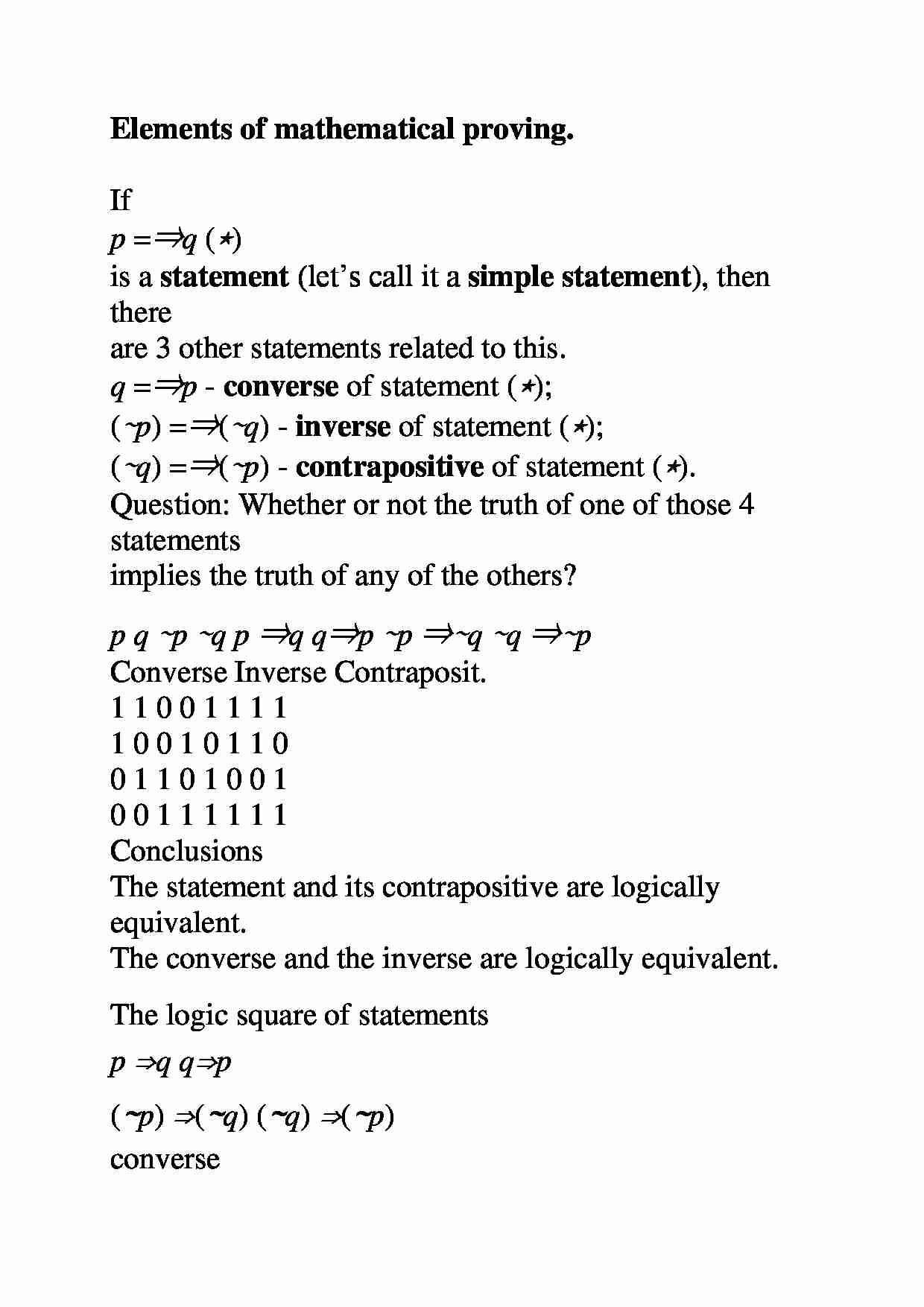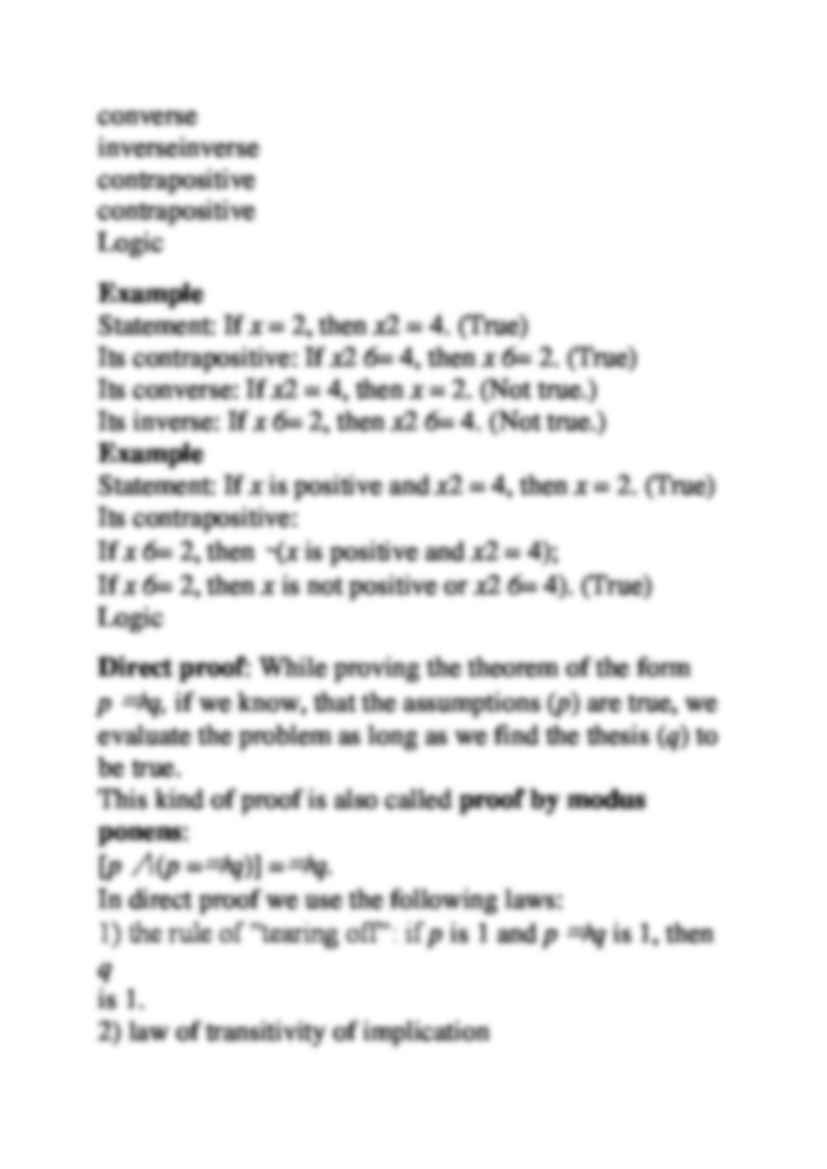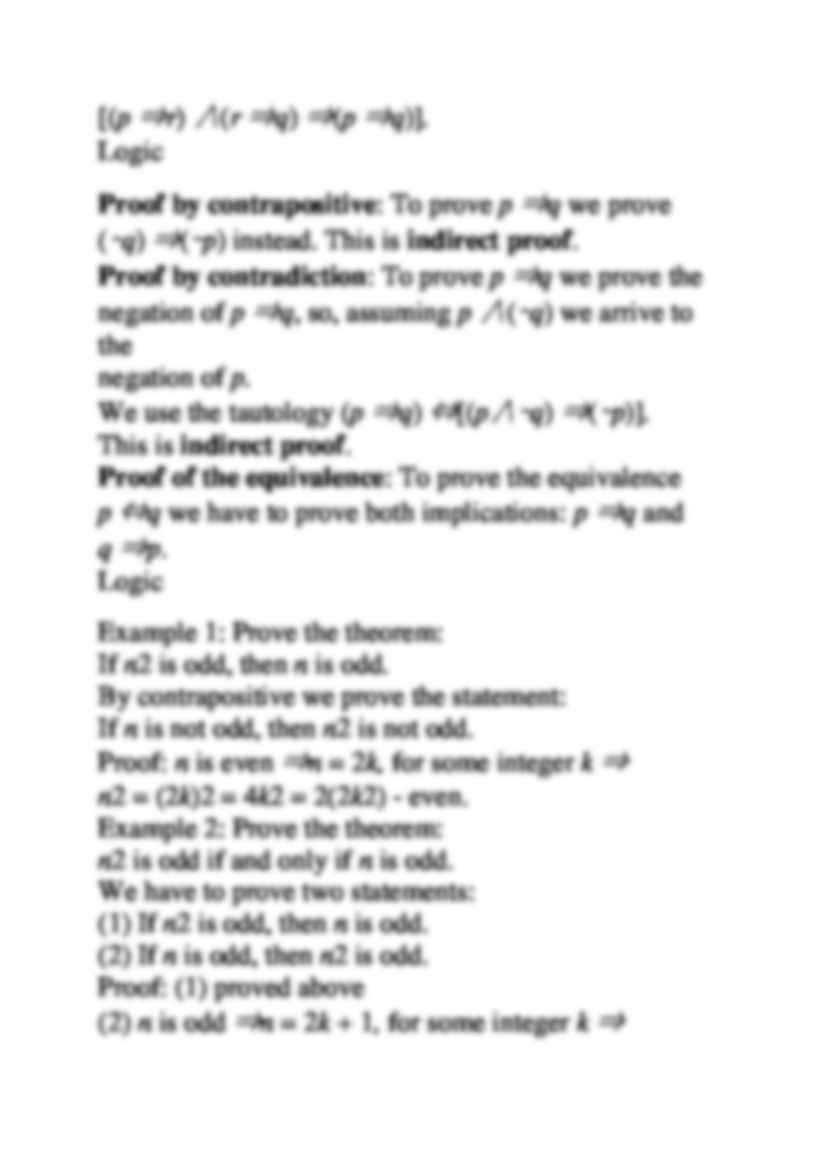To tylko jedna z 4 stron tej notatki. Zaloguj się aby zobaczyć ten dokument.
Zobacz
całą notatkę



Elements of mathematical proving. If p = ⇒ q ( ⋆ ) is a statement (let's call it a simple statement ), then there are 3 other statements related to this. q = ⇒ p - converse of statement ( ⋆ ) ; ( ∼ p ) = ⇒ ( ∼ q ) - inverse of statement ( ⋆ ) ; ( ∼ q ) = ⇒ ( ∼ p ) - contrapositive of statement ( ⋆ ) . Question: Whether or not the truth of one of those 4 statements implies the truth of any of the others? p q ∼ p ∼ q p ⇒ q q ⇒ p ∼ p ⇒∼ q ∼ q ⇒∼ p Converse Inverse Contraposit. 1 1 0 0 1 1 1 1 1 0 0 1 0 1 1 0 0 1 1 0 1 0 0 1 0 0 1 1 1 1 1 1 Conclusions The statement and its contrapositive are logically equivalent. The converse and the inverse are logically equivalent. The logic square of statements p ⇒ q q ⇒ p ( ∼ p ) ⇒ ( ∼ q ) ( ∼ q ) ⇒ ( ∼ p ) converse converse inverse inverse contrapositive contrapositive Logic Example Statement: If x = 2 , then x 2 = 4 . (True) Its contrapositive: If x 2 6 = 4 , then x 6 = 2 . (True) Its converse: If x 2 = 4 , then x = 2 . (Not true.) Its inverse: If x 6 = 2 , then x 2 6 = 4 . (Not true.) Example Statement: If x is positive and x 2 = 4 , then x = 2 . (True) Its contrapositive: If x 6 = 2 , then ∼ ( x is positive and x 2 = 4) ; If x 6 = 2 , then x is not positive or x 2 6 = 4) . (True) Logic Direct proof : While proving the theorem of the form p ⇒ q, if we know, that the assumptions ( p ) are true, we evaluate the problem as long as we find the thesis ( q ) to be true. This kind of proof is also called proof by modus ponens : [ p ∧ ( p = ⇒ q )] = ⇒ q. In direct proof we use the following laws: 1) the rule of ”tearing off”: if p is 1 and p ⇒ q is 1, then q is 1. 2) law of transitivity of implication [( p ⇒ r ) ∧ ( r ⇒ q ) ⇒ ( p ⇒ q )] . Logic Proof by contrapositive : To prove p ⇒ q we prove ( ∼ q ) ⇒ ( ∼ p ) instead. This is indirect proof . Proof by contradiction : To prove p ⇒ q we prove the negation of p ⇒ q , so, assuming p ∧ ( ∼ q ) we arrive to the negation of p. We use the tautology ( p ⇒ q ) ⇔ [( p ∧ ∼ q )
... zobacz całą notatkę






Komentarze użytkowników (0)